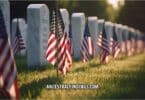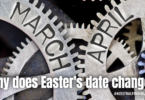St. Patrick was a real man who lived in the 400 A.D. and is the patron of Ireland. Each year, on the supposed date of his death, March 17, Irish and Irish descendants worldwide celebrate his life and all he did for Ireland. Born in Roman Britain, Patrick was the son of a church deacon and the grandson of a priest. Despite his Christian family, Patrick was not initially a believer himself, and at the age of sixteen, was taken captive by Irish pirates and sold as a slave in Ireland.
He lived in captivity there until he was twenty-two, during which time he converted to Christianity while working as a shepherd and praying, which strengthened his relationship with God. He eventually broke free from his captors, returned home to England, and was reunited with his family. He studied Christianity at schools in England and Europe before returning to Ireland as a missionary. Legend says he introduced Christianity to Ireland, banished all snakes from the island, and taught people about the Holy Trinity using a three-leafed shamrock.
If you are of Irish heritage, you probably know some or all of St. Patrick’s story. If you don’t, your ancestors indeed did. The Irish have been celebrating St. Patrick’s Day for centuries. Knowing about some of the customs and traditions surrounding the celebration of this holy and venerated Irish holiday will let you know what the lives of your Irish ancestors were like and who they were as people. Suppose you are not already practicing some of these traditions yourself. In that case, you might find a few that appeal to you that you can bring into your house to celebrate your Irish heritage and bring you and your family closer to your Irish ancestors.
The Wearing of Green
It is traditional in many places, not just Ireland, to wear green on St. Patrick’s Day. Since Ireland is known for its lush, green scenery and is called The Emerald Isle, wearing green is a way to celebrate one’s Irish heritage (or to be Irish for a day if one has no Irish heritage). However, wearing green clothing is more traditional in other parts of the world than in Ireland.
In Ireland, people wear small bunches of shamrocks pinned to their clothing above the right breast on St. Patrick’s Day. This signifies their Irish heritage and celebrates how St. Patrick taught the ancient Irish about the Holy Trinity using the shamrock. Because St. Patrick’s Day is holy in Ireland (at least among the Catholics), the shamrocks people wear are blessed by priests at special holiday church ceremonies called the Blessing of the Shamrock.
The Holy Day of Obligation
Because St. Patrick’s Day is a religious holiday in Ireland, since St. Patrick has his feast day on the Catholic calendar that celebrates him, most practicing Catholics in Ireland attend church on St. Patrick’s Day. It is considered a Holy Day of Obligation by the church. Families dress up in their holiday best, just like they would for Easter; they pin their shamrocks to their clothing and go to church together. After church, families return home and have a special St. Patrick’s Day dinner. It usually consists of roasted meat, boiled vegetables, and mashed potatoes. After dinner, families usually watch St. Patrick’s Day parades worldwide on TV together.
Abstaining from Drinking
It was illegal for pubs to be open on St. Patrick’s Day in Ireland until the late 1970s because of the holiday’s religious nature. They are allowed to be open now, but this relatively recent prohibition seems quite at odds with how Americans and other nationalities celebrate the holiday….with lots of beer. Many Irish devout still abstain from alcohol on St. Patrick’s Day. A few pubs in Dublin and other larger cities serve green beer on St. Patrick’s Day, but it is mainly to please foreigners visiting Ireland on the holy day. Green beer is generally a phenomenon found in other countries’ St. Patrick’s Day celebrations.
Parades and Festivals
While parades are a popular way for the Irish to celebrate St. Patrick’s Day now, the parade did not originate in Ireland. Instead, the first St. Patrick’s Day parade was held in New York City in 1766. Parades are held worldwide for St. Patrick’s Day, and the Irish love watching them on TV.
It was not until 1995 that Ireland held its first St. Patrick’s Day parade, which was done to help boost tourism to the island. Gradually, the parade became the St. Patrick’s Festival, which is a five-day event each year featuring not only the parade but also plays, concerts, art shows, carnival rides, street vendors selling food, and more festivities. The festival is held in Dublin and is now a beloved Irish tradition.
Rural Celebrations
The big cities like Dublin do the large celebrating festivities that get national and worldwide attention, but the rural people in Ireland do their own thing for St. Patrick’s Day. The rural celebrations are much less commercialized and more in tune with the traditional celebrations of long ago. After church, families come home to have their special St. Patrick’s Day dinner (and, yes, corned beef and cabbage is one potential meat-and-vegetable combination they may enjoy). After that, what they do becomes slightly different from the city folk.
The rural Irish, especially the families who still speak Gaelic, usually indulge in some friendly horse racing after dinner. Many of them gather with their extended family or neighbors to enjoy singing traditional St. Patrick’s Day songs and performing traditional dances to accompany them.
St. Patrick’s Day was an important religious holiday to your Irish ancestors and is still essential in Ireland today. Knowing how your ancestors celebrated it and how it is still celebrated in Ireland is a fantastic way to get to know your ancestors better and celebrate your Irish heritage. This St. Patrick’s Day, let your Irish flag fly proudly.






